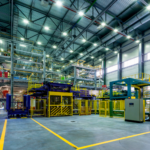
Source: Shutterstock
Tata Steel’s backend digitization keeps the firm ticking
- A crisis can be a catalyst, accelerating changes that are already on the way
- A company like Tata Steel doesn’t need pandemic to prove that they are future-ready, in fact, the current crisis vindicates efforts and investment in the digital transformation journey
Reliant on on-site personnel and complex, global supply chains – as well as the continuation of their customers’ operations – the pandemic was much more disruptive on heavy, traditional industries than in many other sectors. But for those that had digitized back-end processes, the impact was much less destructive.
Take Tata Steel: the world’s most geographically diversified steel producer has been on a multi-year digital-enabled business transformation journey, set to make it the industry leader by 2025.
With operations in 26 countries and commercial offices in more than 35 countries, the firm has been heavily investing, adapting, and improving its cloud computing, connectivity, as well as cybersecurity, and this has powered the company to the “Anytime-Anywhere Compute” platform.
The platform has been in place since mid-2019 and the roll-out to users happened during the last quarter of the same year. The platform, according to Tata Steel’s group CIO Jayanta Banerjee, enables employees to get modular access to systems irrespective of their location (office or home or any out-of-office location) they are in and when their device is connected to the internet with as little as a stable 3G or a stable wi-fi connection.
Security too plays an integral role in the “Anytime-Anywhere Compute” platform as Tata Steel has invested heavily in cybersecurity controls and – with operational technology increasingly vulnerable to cyberattacks – no incidents have been reported so far.
Most importantly, as claimed by Banerjee, there are over eight thousand employees in India alone who are accessing the systems created on the Tata steel Group network. In Tata Steel Europe, there are six to eight thousand active home workers clocking in daily.
In short, cloud, data, and artificial intelligence (AI) are the engines driving the steel giant’s digital transformation away from the factory floors. Tata Steel has broadly classified the AI solutions into three stages namely, smart assistance, intelligence augmentation, and zero human intervention.
The company also has AI solutions for demand forecasting and estimation and the usage of internal and external data is guiding the company’s sales planning and execution efforts. Price prediction models are being used for opportune buying.
In a recent report by The Economic Times, Banerjee said, more than technology, AI is about bringing out tangible business benefits for the steel major.
“We have developed and deployed various AI applications across our value chain. In our business-first approach to AI, we start by identifying business KPIs where AI is expected to drive clear tangible business benefits followed by a cross-functional approach wherein domain experts to work with data scientists to develop the solution that adequately captures years of experience and knowledge along with the characteristics of historical data.”
The business outcomes of AI for Tata steel are improvised business KPIs over the years and 60%-70% of the solutions have some form of AI or data analytics built into them. Overall, digital initiatives have created improvement upwards of Rs 1,000 crore in the last two years for Tata Steel.
READ MORE
- Ethical AI: The renewed importance of safeguarding data and customer privacy in Generative AI applications
- How Japan balances AI-driven opportunities with cybersecurity needs
- Deploying SASE: Benchmarking your approach
- Insurance everywhere all at once: the digital transformation of the APAC insurance industry
- Google parent Alphabet eyes HubSpot: A potential acquisition shaping the future of CRM


